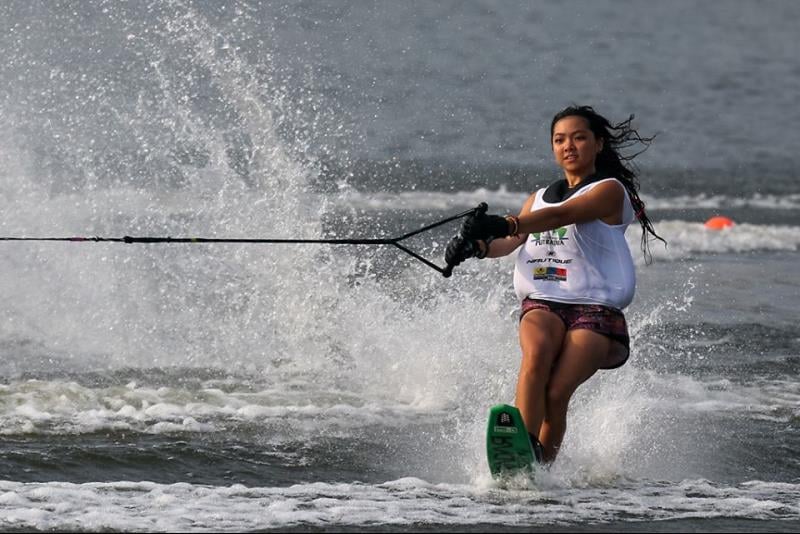Water skiing terminology

Image credit: Geoffrey Kee
Water ski, as with some other water sports, involves the usage of certain terms due to its nautical nature. These terms can be confusing to beginners, who might not understand their meanings. Here are some of the fundamental terms and names used in water skiing.
Bevel
The bevel is the area on the water ski that is between the side and the bottom of the ski. Typically, the rounder the bevel, the deeper the ski will sink in the water, making it harder to control.
Bindings
The bindings on a water ski is the part that keeps the participant’s feet and the ski together. These bindings are usually rubber, and can be adjusted for a better fit.
Bridle
The bridle is a part of the rope that connects the handle to the rest of the rope, and is usually in a ‘Y’ shape.
Buoy
In a competitive water ski tournament, buoys are used as markers that float on the surface of the water, indicating the path that the skier (and boat) has to take. There are typically 25 buoys that a skier will have to pass in every competition.
Cut
This refers to shortening of the rope length in a water ski competition.
Deep Water Start
A deep water start refers to a skier who starts the competition while being in water. This is done by holding onto the rope while in deep water and allowing himself to be pulled upright by the forward motion of the boat.
Dock Start
A dock start is the opposite of a deep water start, and refers to a skier who begins the competition by standing on a dock or dry ground. The skier will be pulled into the water by the boat. This method is less common than deep a water start as the skier is more likely to sink in the water if the boat is not fast enough.
Flex
Flex refers to the flexibility of the ski. Typically, softer skis helps a water skier perform tighter turns. Stiffer skis are frequently used by beginners as it does not have as much movement in rougher waters, hence making it easier to control.
Jump Water Ski
Jump water skiing is one of three different types of water skiing competitions, and involves the skier going over a ramp, so that a greater height and distance can be covered.
Observer
In majority of water ski competitions, at least three people will have to be involved – the skier, the boat driver, and the observer. The role of the observer is to sit behind the boat driver and pass on any signals that the skier might produce, as well as notifying other water skiers if a participant has gone under water.
To receive the latest updates on the happenings in the Singapore sports scene, or to find out more about some of the latest programmes on offer at ActiveSG, like our Facebook page here.



